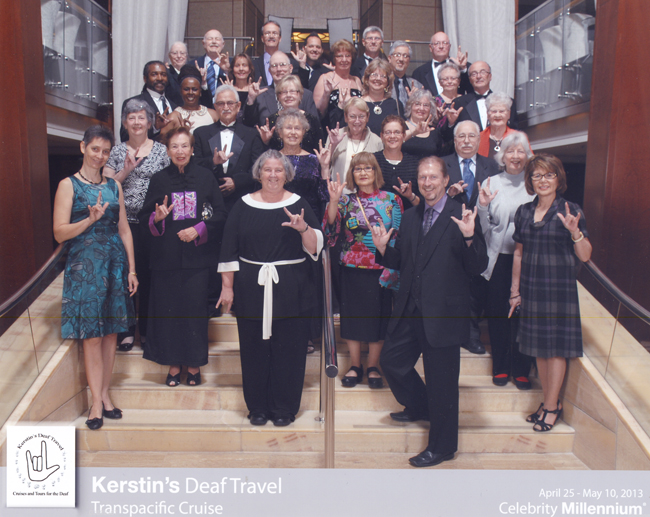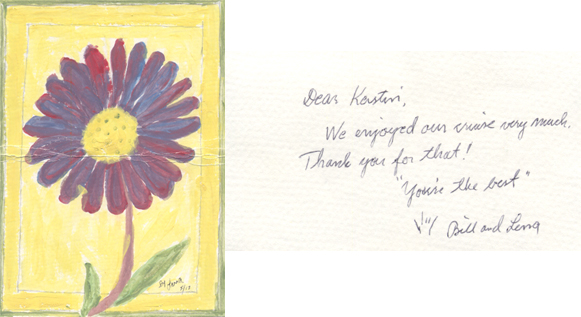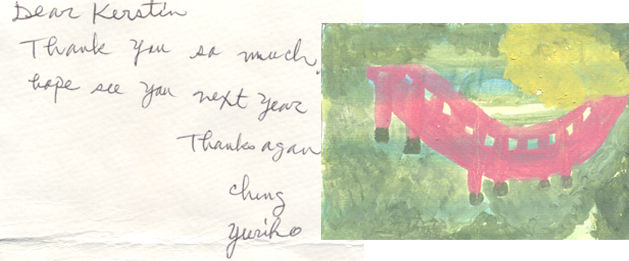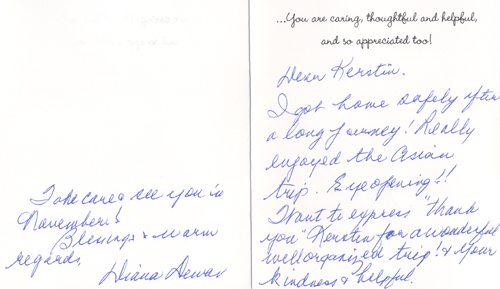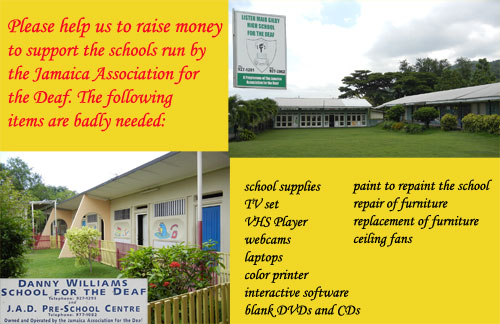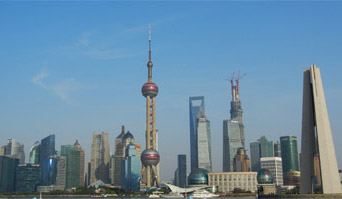
New Shanghai
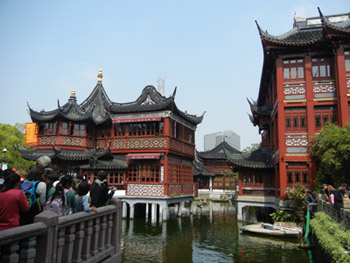
Old Shanghai
|
Our Transpacific Cruise and a three day stay in Shanghai prior to the cruise was a very interesting
experience for all of us. We encountered the cultures and traditions of China, Japan and the Far East of Russia. We
learned a lot about their history, language and religion. We met many people who made our trip enjoyable and an
extraordinary voyage.
China is the world's most populous country and the world's second largest country by land area. China had one of the world's
earliest civilizations and saw many different dynasties shaping the culture and customs of its people. The People's Republic of
China was established in 1949. Today, the country is one of the world's fastest-growing economies.
Shanghai, China's largest city by population is located in the Yangtze River Delta. Because of its prime location the
city has been an important administrative, shipping, and trading point for many centuries. Shanghai flourished as a center of
commerce between east and west in the 19th century. Today, the city is a popular tourist destination with a booming economy.
|

|
Our first tour in China was a bus tour to Tongli and Suzhou located West
of Shanghai.
Tongli is a 'water village' known as the "Venice of the East" and showcases over 1,000 years of history and cultural heritage.
Tongli is a "museum of ancient architectures" with its 49 bridges and numerous old houses built along several canals. Many
houses and temples are dating back to the Ming and Qing Dynasties. Poets, painters, and Confucian scholars were attracted
by the unique structure of the old town. Lunch was served in a local restaurant where we enjoyed delicious local food.
After a one hour drive from Tongli, we reached Suzhou. Suzhou was founded in 514 BC. It is one of the top tourist attractions
in China and well known for its classical gardens, pagodas and stone bridges. The classical gardens have been listed as UNESCO
World Heritage Site. One garden we visited was the Master-of-the-Nets Garden. The garden is divided into residential and garden
areas. Plants and rocks are used to create interesting points of view. One of the cypress trees in the garden area was planted
during the Ming Dynasty.
Later, we learned about the production of silk in a silk factory. During the Song Dynasty the city saw a growing silk industry.
We were amazed by the craftsmanship that is required to produce the fine and subtle product of silk.
|
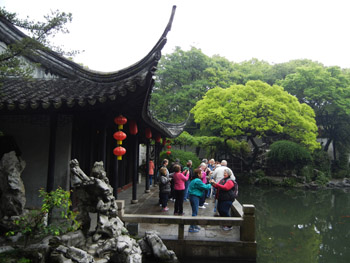
Tongli
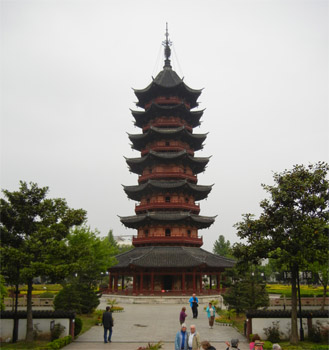
Suzhou |
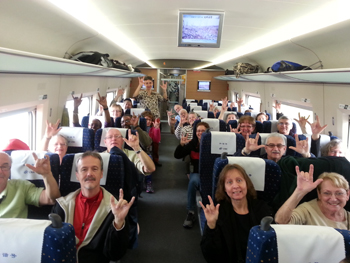
Traveling on the high speed train
Picture: Joseph
Sapienza
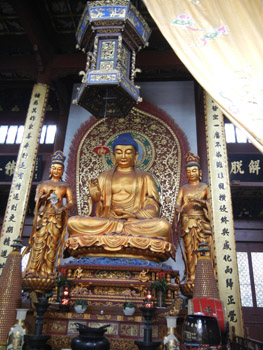
Lingyin Temple
|
Our means of transportation the next day was the high-speed train that brought us to Hangzhou,
another city located in the Yangtze River Delta, southwest of Shanghai. The city is known for its beautiful natural scenery.
First we visited the Buddhist Lingyin Temple and monastery of the Chan sect. The monastery was founded in 328 AD.
The temple is one of the largest and wealthiest Buddhist temples in China.
After lunch, we enjoyed a boat trip on the West Lake. The freshwater lake is man-made and surrounded by hills on the
northern and western side. Artificial islands, pagodas and temples in the lake give it an interesting characteristic.
Many poets and painters were attracted by this beautiful setting.
On the way to a tea plantation we stopped at the Six Harmonies Pagoda. The Pagoda is much admired for its proportions
and for the style and quality of its artisanship.
We then visited the Dragon Well tea plantation. There, we learned many interesting things about the harvest, processing
and preparation of green tea. The tea is known for its high quality. The tea leaves are roasted to stop the natural
oxidation process. When brewed, the tea produces a yellow-green color. |
The next day, we transferred to the port, where we embarked Celebrity's Millennium. We had enough
time to check out the different venues on board the ship before our departure. Our next port of call was to be Jeju,
South Korea. Unfortunately, the weather was not favorable to get in to the port of Jeju. Thus, we had to stay at sea
and continued on to Japan. During the days at sea we were busy with many activities offered on board the ship.
|
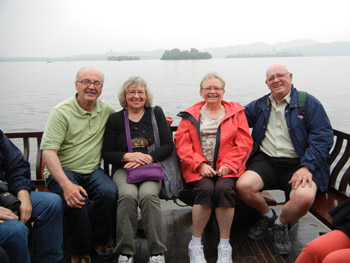
Boat tour on the West Lake
|
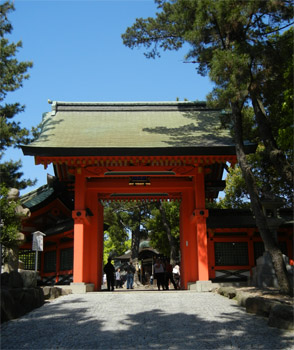
Sumiyoshi-taisha Shrine |
Our first port in Japan, where we stayed for two days, was Kobe. After our arrival in Kobe, some of
us went to Mt. Rokko and others to Osaka, the 2nd largest city in Japan. We visited the Osaka Castle that was built at
the end of the 16th century. It burned down in a series of battles and was reconstructed in the early 20th century. We
enjoyed the great view from the 8th floor of the castle having a panoramic vista of Osaka. Next, we went to
Sumiyoshi-taisha Shrine that was built in the 3rd century. 600 stone garden lanterns mark the walk ways and a beautiful
red arched bridge spans over the pond. We were lucky to witness several wedding ceremonies conducted in the traditional
style while visiting the temple.
|
Next, an all day tour took us to Nara and Kyoto. Nara is an ancient capital where we visited the
Todaiji Temple. The temple is famous for the great image of Buddha and is the largest existing wooden structure in the
world. Nara Park has many deer and other wild animals that live on the property and are a nice addition to the park. |
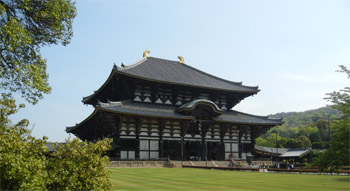
Todaiji Temple
|
Later in the afternoon, we transferred to Kyoto and were amazed by our first sight of the Golden
Pavilion. The mirror reflection of the temple on the still pond in the garden is a marvelous scene. The Zen Buddhist
temple is surrounded by a complementing garden design that emphasizes the coexistence of the building and
nature. The location was originally a villa owned by a powerful statesman in the 14th century. After his death, the
villa was converted into a Zen temple. The original temple burned down in 1950 but was rebuilt a few years later when
the gold-leaf coating was added.
|
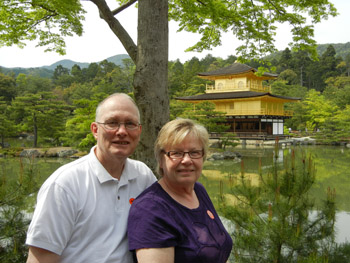
Golden Pavilion
|
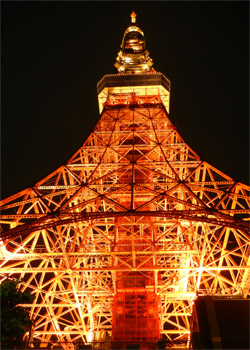
Tokyo Tower
|
Yokohama, Japan was our port of call for the next two days. Arriving in the afternoon, we took
a bus tour to Tokyo to get a glimpse of the most important sights of the Japanese capital. Tokyo is one the world's
largest cities. In 1964 Tokyo hosted the Summer Olympics and is currently a candidate for the 2020 Summer Olympic Games.
We were impressed by the modern appearance of the city. The highway and tunnel system is very well laid out in order
to manage all the in- and outgoing traffic. Also, during a scenic drive, we saw parts of the Imperial Palace Ground. We
stopped at the Tokyo Tower, completed in 1958. At 1,093 feet it is Japan's 2nd tallest self-supporting steel tower.
From the Grand Observation platform, we got a breathtaking view of Tokyo. |
Since Tokyo is an astounding city, we returned the next day in order to do some more in depth sightseeing.
Our journey began with a visit of the Asakusa Kannon Temple, founded in the early 7th century. Red and white paper lanterns
are to found everywhere reminding the visitor of the donors. Afterwards, we strolled down Nakamise-dori, the "Street of
Inside Shops". We stopped at the Imperial Palace grounds for a photo stop. The large park-like area is the main residence
of the Emperor of Japan. Only twice a year is the public permitted to enter the park.
We enjoyed a delicious lunch at a local hotel restaurant. Next to the hotel we saw a copy of the Statue of Liberty.
In the afternoon, we visited the Meiji Shrine. The shrine is dedicated to the Emperor Meiji who was the father of modern
Japan. The beautiful shrine is surrounded by a dense forest. The setting symbolizes the separation of the spiritual from
the worldly.
|
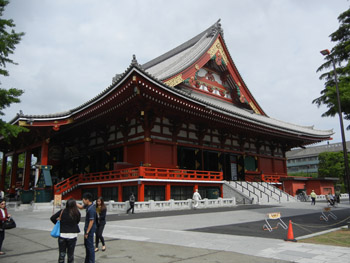
Asakusa Kannon Temple
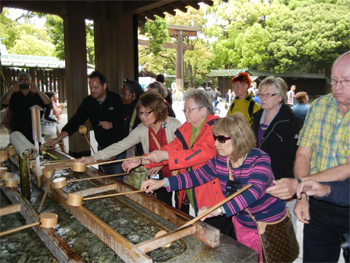
Cleaning procedure before visiting the Meiji Shrine |
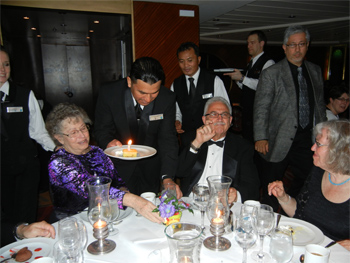
Birthday Celebration
|
The Days at Sea were filled with many onboard lectures and activities. We liked the Trivia, Line
Dancing, Water Coloring Classes, Zumba, Exercise sessions at the gym, Texas Hold'em, Bingo, Destination Lectures,
cooking classes and many more. And a birthday or wedding anniversary is always an occasion to celebrate. |
Our last port of call was Petropavlovsk on the peninsula of Kamchatka in the Far East of Russia.
When we arrived there, the winter season was still prevailing with layers of snow on the ground. Kamchatka is known
for its volcanoes and vast wild life. The Danish explorer Vitus Bering founded Petropavlovsk in 1740. Some of us joined
the Cuisine of Kamchatka tour in order to learn about the traditional food. Others participated in a tour that took us
to an orthodox church and a local museum. While visiting the church, we saw that the congregation celebrated Easter in
a very festive atmosphere. During a guided tour at the museum, we learned interesting facts about the area's history,
culture and wild life. |
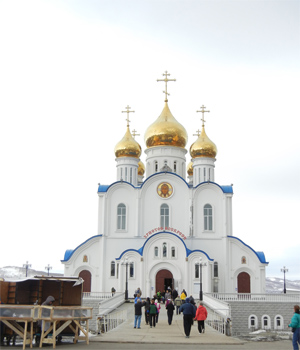
Orthodox Church in Petropavlovsk |
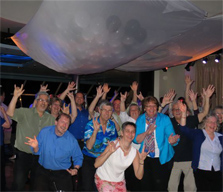
"Dateline Passing" Party
Picture: Charlene Slay |
During one of the days at sea we were able to celebrate the crossing of the International Date Line.
Thus, we had two days with the same date: May 6th before we crossed the dateline and another May 6th after we crossed
the date line. Most of us participated in the dateline party and hopped over the "imaginary" dateline at
12 midnight. The following days at sea were busy with onboard activities, deaf game nights and birthday and wedding
anniversary celebrations. There was never a dull moment. |
Our cruise terminated in Seward, Alaska. After disembarking the ship and waving good-bye to the
Millennium, we embarked a train that took us to the airport in Anchorage. During the four and a half hour train ride
we adored Alaska's natural beauty. Majestic snow covered mountains where part of the beautiful scenery seen in any
direction one looked. |
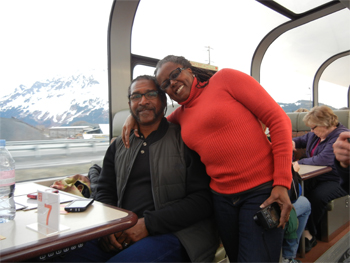
On the train from Seward to Anchorage |

|



